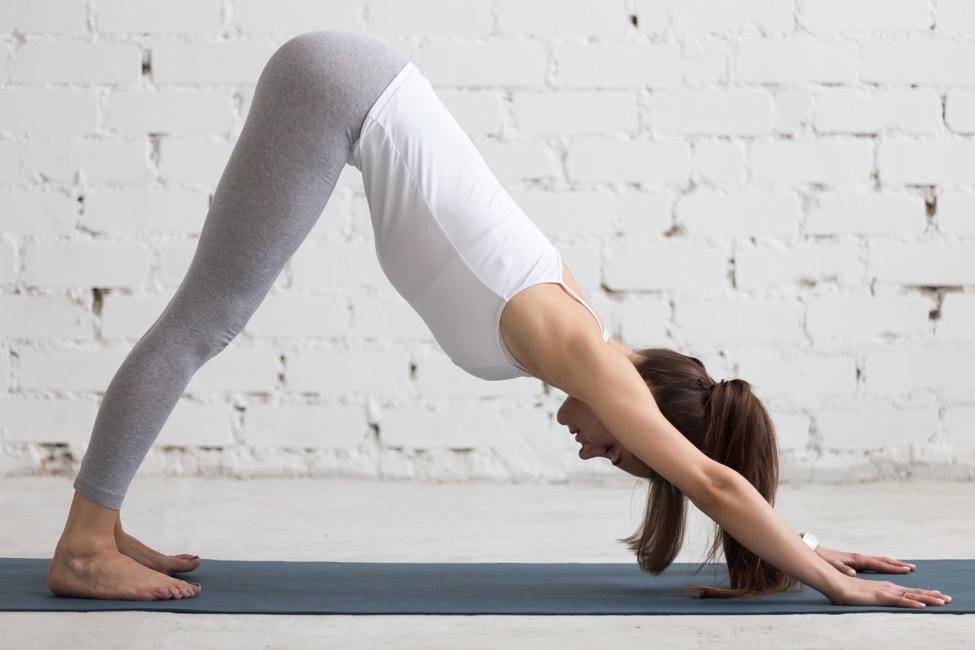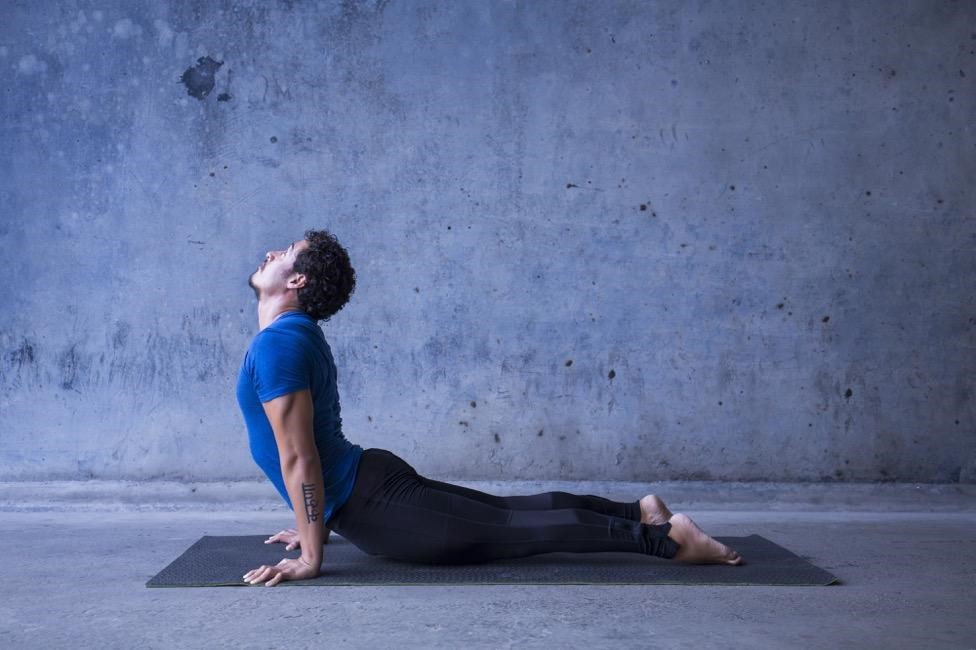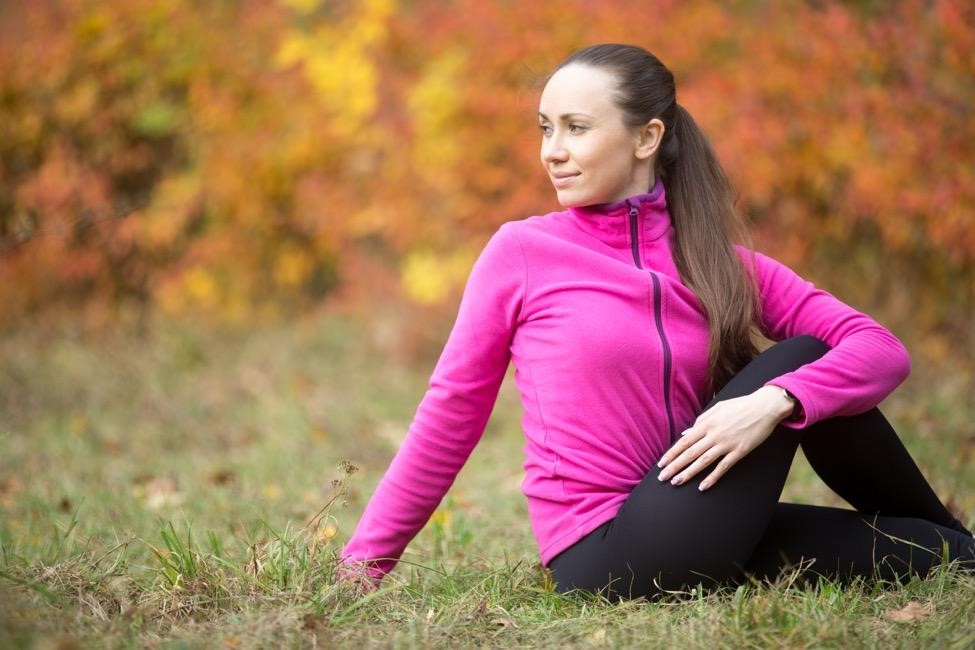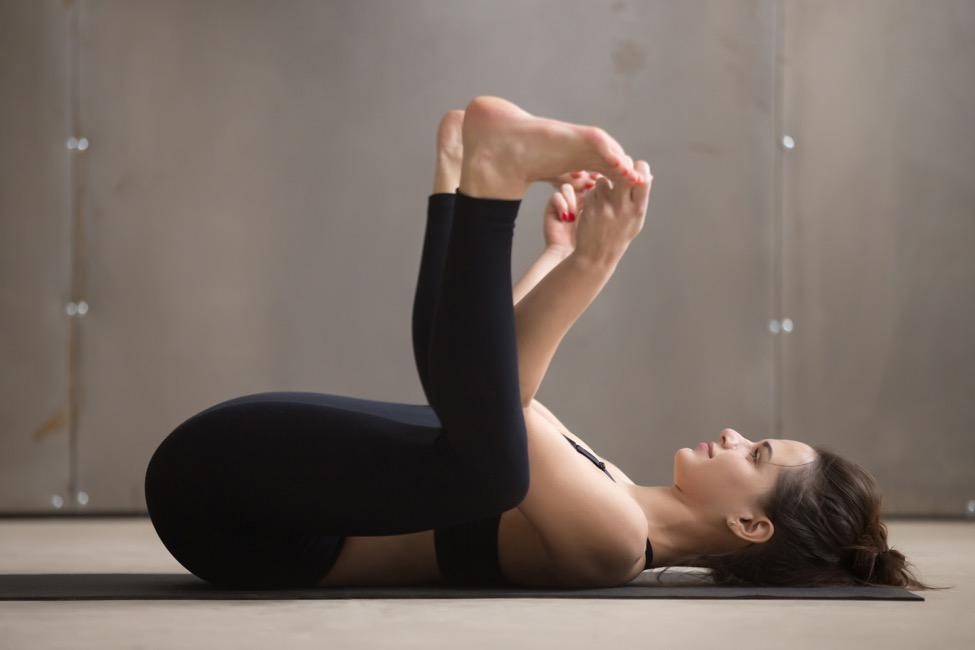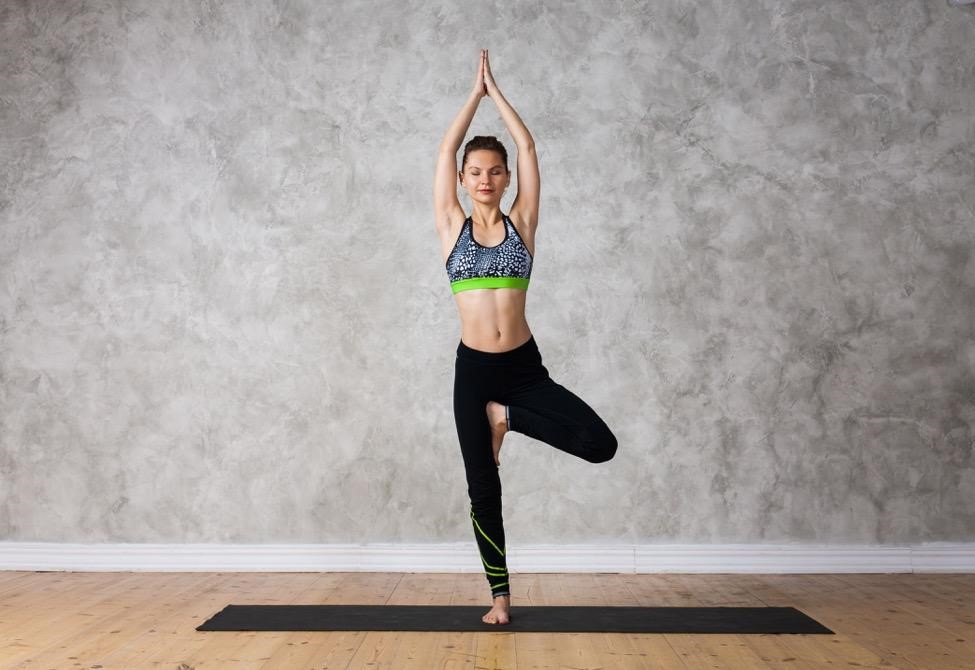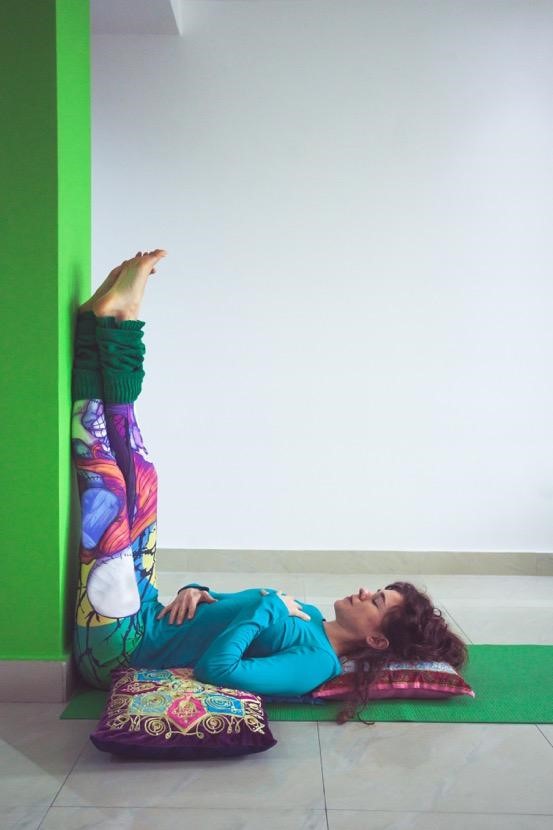Running is fantastic exercise, but your body can take a pounding from the repetitive motion. Give tense muscles and joints some love by adding yoga to your routine. Not only does yoga help with stress and building the mind-body connection, but studies have shown that the increase in balance and flexibility from a regular yoga practice helps improve running times. Yoga poses work every muscle in the body, loosen tight areas and the practice of yogic breathing can lead to better lung capacity.
If you’d like to experiment with yoga, these nine poses are a good start. They don’t have to be done in a particular sequence; however, try to stay in each pose for at least five breaths to reap the full benefits.
1. Downward Dog
This is the godfather of all poses because it works so many muscles and energizes the body. It lengthens tight calves and hamstrings and opens the hips while building strength in the arms, legs and back.
Try It: Start on your hands and knees with your knees directly below your hips, and your hands slightly forward of your shoulders. Engage your abs, press your knees away from the floor while keeping your arms straight and lift up your tailbone. Don’t worry if your legs are slightly bent or if your heels don’t touch the floor. As your calf and hamstring muscles start to lengthen, your legs will straighten and your heels will lower.
Yoga may not be as intense as a five-mile run but holding a pose like downward dog for an extended period can certainly get the heart pumping. Hydrate regularly throughout your yoga session by keeping a handheld water bottle by your mat.
2. Pigeon
Hands down the best pose for opening stiff hips, a significant issue for runners. It also stretches the hips and the back. If you have knee issues, here’s a modification.
Try It: Bring your right knee between your hands, placing your right ankle by your left wrist. Extend your left leg behind you so your knee and the top of your foot rest on the floor. Lift your chest, reach your torso forward and lower it down. You can put your arms out in front of you on the floor or clasp your hands together and use them as a support for your forehead. Repeat on the other side.
3. Upward-Facing Dog
The complement to downward dog, upward-facing dog opens the chest, hip flexors and stretches the shoulders.
Try It: Start on your hands and knees and let the hips sink forward toward the floor. Press your hands into the floor, drop the shoulders down and back, press the chest forward and reach your head up towards the ceiling. Lift your thighs and legs off the floor by pushing the tops of the feet down.
4. Seated Spinal Twist
This pose works so many muscles groups–the outer hips, buttocks, back, side abs and chest–while helping to restore and preserve the spine’s natural range of motion.
Try It: Sit up straight with both legs out in front of you. Cross your right foot over your left thigh and bring your left foot back to your right hip. Place your right fingertips behind you and hug your left knee into your chest and twist. Repeat on the other side.
5. Happy Baby
A great name for a wonderfully restorative pose that opens your hips, groin area and lower back.
Try It: Lie on your back, bend your knees into your chest and open them slightly wider than your torso. Grab the outsides of your feet with your hands and bring them up toward your armpits. Keep your feet flexed. If you’d like, you can rock from side to side, which provides a more in-depth stretch in the inner thighs.
6. Forward Fold
This is a simple, easy stretch for the hamstrings and lower back–two areas that are often stiff and tight from running.
Try It: From a standing position, fold forward at the hips and grab onto your elbows or your ankles if you’d like more of a stretch. Relax your head and neck and with each exhale try to lower a little further toward the floor.
7. Triangle
Tight hamstrings don’t stand a chance in triangle pose. It lengthens the muscles in the legs and the obliques while developing strength in the ankles, thighs and knees.
Try It: Stand at the top of your mat, feet hip-distance apart. Take a large step back with your right foot, about three feet. Pivot the right foot to the side while keeping the left foot pointing forward. The heel of the front foot should be lined up with the arch of the back foot. Rotate your hips towards the right side of the mat. Raise your arms to shoulder height and hinge forward over the left leg. Reach the left hand towards the left shin and extend the right arm up towards the ceiling. If you feel comfortable, you can go deeper into the pose and place your left hand on your foot or on the floor. Repeat on the other side.
8. Tree
Experts say you can lose up to 75 percent of your balance between the ages of 25 and 75. Work on your stability with tree pose which can help increase the equilibrium runners needs to predict movement changes and make their runs smoother and faster. Not only does tree pose help with balance, but it strengthens thighs, calves, ankles and the spine and opens up the groin and inner thigh area.
Try It: Stand straight, lift your chest and concentrate on an object a few feet in front of you. Press your right foot into the floor and lift your left leg. Rest your left foot either above or below your right knee, never on the knee joint. Raise your arms above your head with palms together. Repeat with your right leg.
9. Legs-Up-the-Wall
The name says it all. This is a comfortable, calming stretch that uses gravity to help loosen tight hamstrings, increase circulation and drain tension from legs and hips.
Try It: Lie on the floor and scoot your bottom as close to the wall as is comfortable. Swing your legs up on the wall and extend them, so the backs of your legs are touching it. Experiment with the position until you find the placement that works for you. Sometimes elevating the hips with a block or blanket is helpful. Stay in the pose for at least five minutes.

